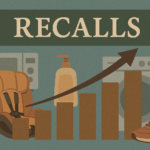Photos of damaged vehicles are relevant to the likelihood and degree of personal injury in a car accident case and they are admissible at trial, even when no expert witnesses are around to testify about them, the Massachusetts high court has ruled.
The Supreme Judicial Court upheld a lower court judge who exercised discretion in permitting the defense to submit photos, in a case where there was no expert witness, and allowed the defense to argue there is a correlation between the property damage from the collision and personal injuries sustained by the plaintiff.
“[M]ost courts believe that a jury is ordinarily quite capable of correlating outward appearance of damage with likelihood and extent of injury,” the high court said, agreeing with the rule of a majority of states.
In the case before the court, photographs of the plaintiff’s vehicle depicted minimal front-end damage and slight rear-end damage, and photographs of the defendant’s vehicle depicted minimal front-end damage.
“These photographs were relevant to assist the jury in determining the extent of the plaintiff’s injuries and whether her ongoing medical issues were a likely result of the accident or of preexisting conditions,” the court found in affirming the lower court action.
In May 2015, Kristiana Laccetti was traveling on Storrow Drive when another vehicle abruptly cut in front of her and stopped, forcing her to slam on her brakes. In response, the defendant, Steven G. Ellis, who was traveling behind her at the time, slammed on his brakes but nonetheless rear-ended the plaintiff. The parties exited their vehicles to assess the damage and called 911. The driver who cut in front of the plaintiff left the scene.
In the months and years after the accident, Laccetti received various medical treatments, including by a neurologist for headaches and cognitive difficulties, a chiropractor, multiple physical therapists, and multiple types of doctors for chronic neck and back pain and worsening migraines.
In December 2017, Laccetti sued Ellis for negligently rear-ending her, seeking damages for her out-of-pocket medical expenses, lost wages, diminished earning capacity, pain and suffering, and emotional distress. She sought damages in the neighborhood of $350,000.
At trial, Laccetti objected to the admission of the photographs and to a description of the property damage sustained by Laccetti’s vehicle in the collision.
The jury found that Ellis negligently injured the plaintiff and awarded her $10,000 in damages, which in keeping with state law, the trial judge reduced by the $8,000 she had already received in personal injury protection insurance benefits. Laccetti appealed.
During trial, the parties had offered different descriptions of how the accident unfolded. Laccetti testified that Ellis rear-ended her before she made contact with the vehicle in front of her and with enough force to push her into the vehicle in front of her. The plaintiff did not characterize the accident as minor and testified that her vehicle sustained a moderate amount of damage from the collision. She testified that she suffered a concussion, a neck injury, an increase in migraine headaches, and an exacerbated back injury as a result of the accident.
By contrast, the defendant Ellis testified that he and Laccetti were both driving 25 miles per hour in “very heavy” traffic and that there was approximately a one- to two-vehicle distance between their cars. Ellis said that he observed the plaintiff hit the vehicle in front of her before he slammed on his brakes and rear-ended the plaintiff. He testified that, at the time of impact, he was traveling no more than 10 miles per hour.
Whether Laccetti’s various medical conditions were preexisting or were caused or exacerbated by the accident was highly contested at trial. The defendant’s medical expert testified that Laccetti had preexisting migraines and lumbar spine disease that were neither caused by nor exacerbated by the accident. He also told the jury that, as a result of the accident, Laccetti did not suffer a concussion or post-concussive syndrome and that, “at most, in [his] opinion, she suffered a mild neck sprain.” He further testified that her exacerbated migraine headaches and back pain were not necessarily related to the accident.
The court called it “undeniable” that it is possible for an automobile accident that results in minor vehicle damage nevertheless to cause serious physical injury, just as it is “undeniable” that an accident that results in major vehicle damage may not cause serious physical injury.
But Laccetti argued that the relationship between vehicle damage and the likelihood of serious physical injury is “complicated and is not a direct correlation.” Laccetti maintained it “is not true that severe injuries are more likely in severe accidents and less likely in less severe accidents,” and that the topic “requires expert testimony to guide the jury on their consideration of the issue at trial.”
Accordingly, Laccetti argued that the photographs showing minor vehicular damage must be excluded, in the absence of expert testimony.
But the SJC disagreed, even while acknowledging that one state, Delaware, adopted this rule on the ground that “any inference by the jury that minimal damage to the plaintiff’s car translates into minimal personal injuries to the plaintiff would necessarily amount to unguided speculation.” However, the court noted that Delaware has since retreated and now most state courts believe that “a jury is ordinarily quite capable of correlating outward appearance of damage with likelihood and extent of injury.”
The SJC explained why it agrees with the majority rule.
“It does not follow from the undeniable fact that an accident can result in minor vehicular damage and serious physical injury that the extent of the vehicular damage is irrelevant to the extent and likelihood of physical injury. To the contrary, in the ordinary run of cases, a jury is free to accept (or, for that matter, to reject) the commonsense notion that more vehicular damage from a collision makes serious physical injury more likely,” the court stated.
The court added that either side is free to offer expert testimony on the issue but that it is not required.
Was this article valuable?
Here are more articles you may enjoy.


 Will Workers’ Comp Benefit from ‘Most-Favored-Nation’ Drug Pricing?
Will Workers’ Comp Benefit from ‘Most-Favored-Nation’ Drug Pricing?  Two Chevron Workers Die of Injuries From Angola Platform Fire
Two Chevron Workers Die of Injuries From Angola Platform Fire  Hackers Abuse Modified Salesforce App for Data Theft and Extortion, Google Says
Hackers Abuse Modified Salesforce App for Data Theft and Extortion, Google Says  Recalls and Claims Amid A Sea of Regulatory Change
Recalls and Claims Amid A Sea of Regulatory Change 